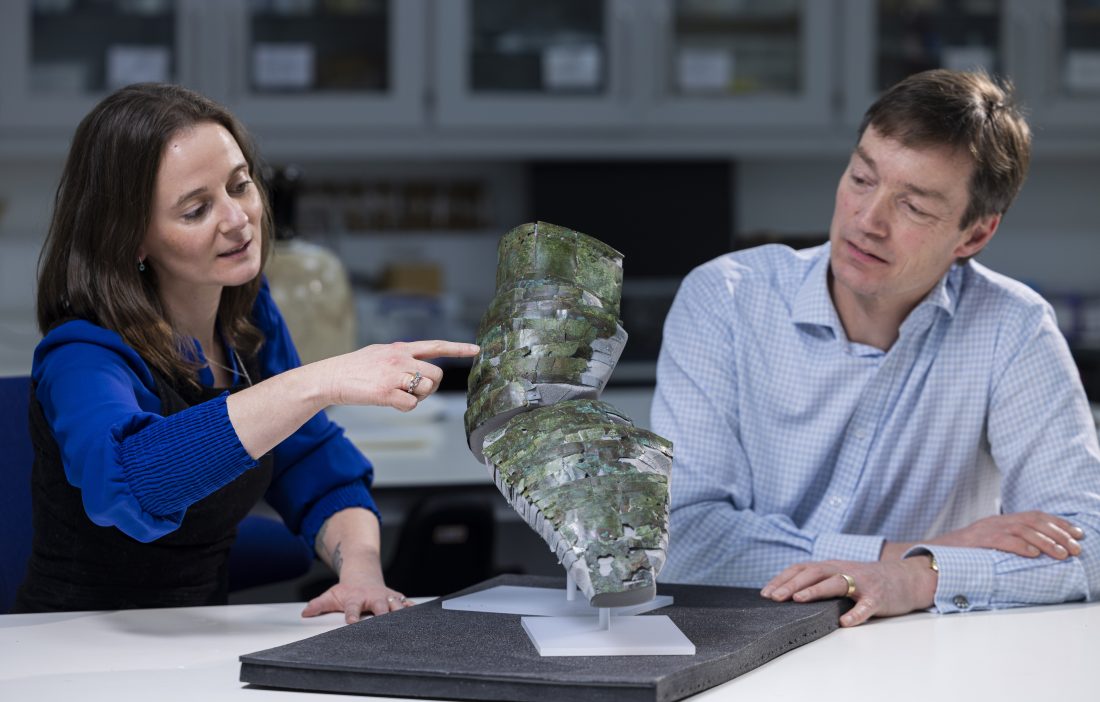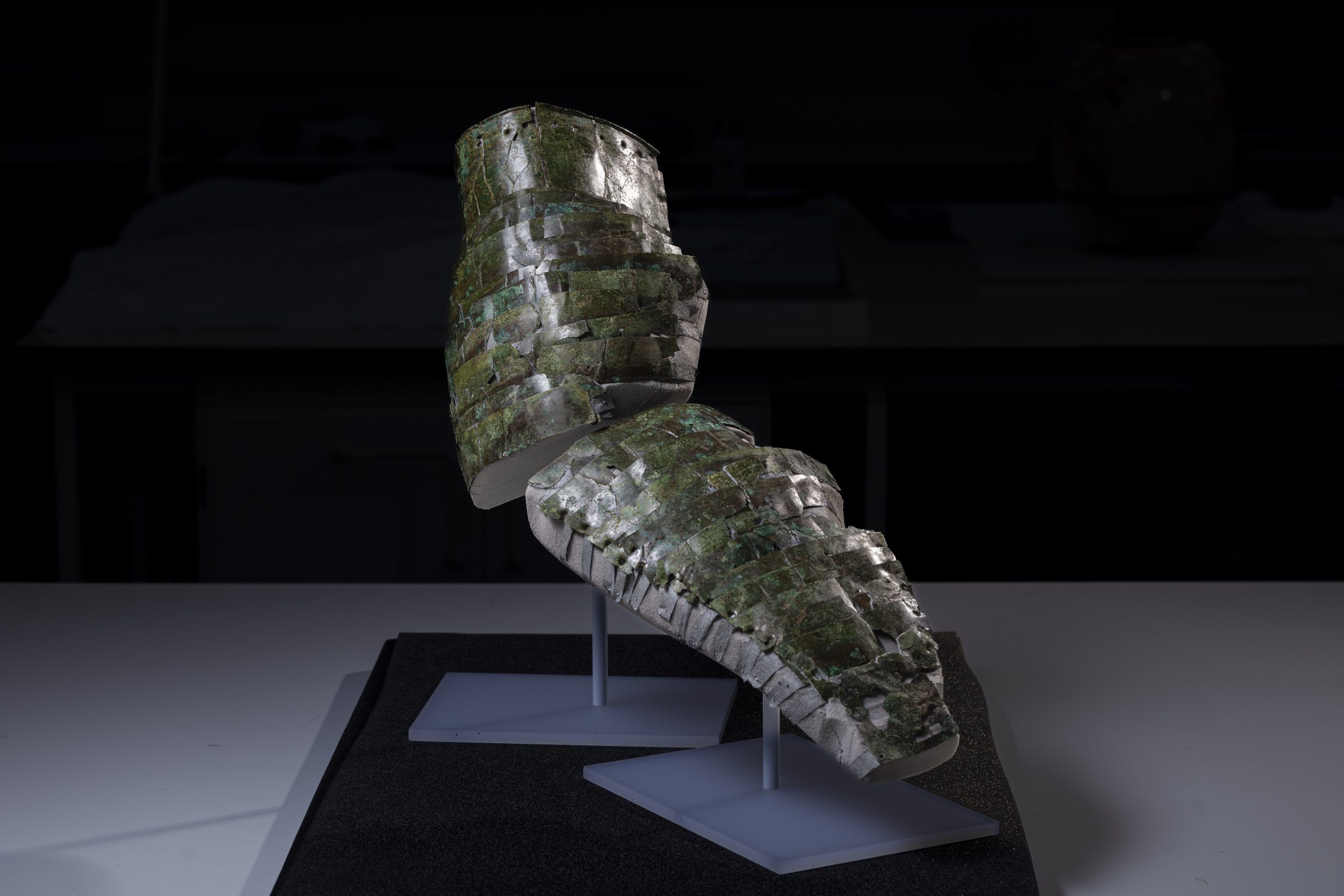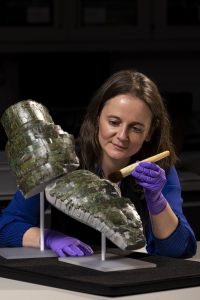
Rare Roman armour to go on display after experts complete ‘ancient jigsaw puzzle’
An incredibly rare piece of Roman armour from the second century has been reconstructed from dozens of fragments.
The brass arm guard, held in the National Museums Scotland collection, will be seen in its entirety for the first time in nearly 2,000 years when it goes on loan to the British Museum.
Conservators in Edinburgh spent weeks rebuilding the arm guard, which is the most intact example of its kind and one of only three known from the whole Roman Empire.
The armour was discovered in over 100 pieces at the site of the Trimontium fort near Melrose in 1906. It is in remarkably good condition, with remnants of leather straps still attached to the metal.
The fragments have been in National Museums Scotland’s collection for over a century. The upper section has been on display in the National Museum of Scotland for 25 years, with the lower section loaned to the Trimontium Museum and dozens of fragments stored at the National Museums Collection Centre.
They have now been brought together and assembled for the first time, offering a glimpse into the life of a legionary in Roman Scotland.

Following the exhibition at the British Museum, the arm guard will go on permanent display at the National Museum of Scotland.
‘This is an incredibly rare object, and it’s great that this exhibition gave us the opportunity to rebuild it. The transformation is striking,’ said Dr Fraser Hunter, principal curator of prehistoric and roman archaeology.
‘Now that it’s been reconstructed, you can picture the legionary who once wore it.
‘It was both protection and status symbol – brass was expensive and would have gleamed like gold on his sword arm. It offers a vivid connection to this important period when Scotland sat on the Roman Empire’s northern frontier.’
The arm guard stretches down from the shoulder and ends in a thin square of metal that would have protected the wearer’s hand, a design that may have been inspired by the equipment worn by gladiators fighting in the arena.
Experts initially believed it would have been body armour, and it was later thought to be a thigh guard for a cavalryman. It is only in recent years that its true function has been understood.

Richard Abdy, curator of Roman and Iron Age coins at the British Museum, said: ‘It’s a splendid privilege to premier the National Museums Scotland armoured sleeve for the British Museum’s exhibition.
‘The flexible armguard is an iconic piece of equipment for Roman gladiators, so it is unusual to see it as a sword-arm protection for Roman soldiers too. Its display, posed with classic legionary segmental body armour, is stunning.
‘The latter is also possibly derived from gladiator kit and we even think that the training regime for the amphitheatre originally inspired combat training of the professionalising Roman army.
‘The image of Roman soldiers and gladiators appropriately unite in one artefact – two characteristic strands of the dark side of Roman civilisation that have long fascinated public imagination.’
TAGS

